Did you know? Only 1 in 5 high school students and 1 in 4 adults regularly achieve the recommended amount of physical activity for their age group . The truth is, age isn’t just a number—it’s a key factor in shaping your ideal workout routine. Whether you’re just learning to skip or maintaining your zest for movement in your golden years, recognizing how physical activity by age group transforms your body and mind can change your life. Read on to unlock practical tips, surprising data, and expert guidance designed to make your next fitness step your smartest one yet!
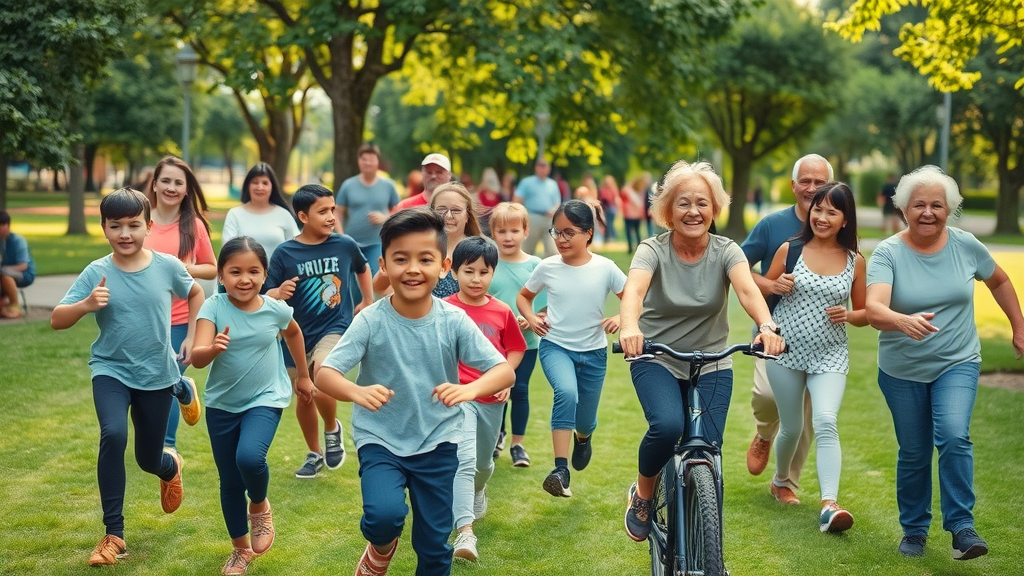
Unlocking the Power of Physical Activity by Age Group: Surprising Facts and Why Age Matters
- Discover optimal physical activity guidelines for every age group
- Gain clarity on aerobic activity, vigorous activity, and their benefits across the lifespan
- Identify how activity guidelines shift from children and young people to older adults
- Understand the latest statistics about physical activity and health
- Master practical routines for different age brackets
- Explore inspiring quotes from leading health experts
"Inactive lifestyles are now a leading cause of preventable health issues globally—it’s never too early or too late to get moving." – World Health Organization
The impact of physical activity by age group is profound and far-reaching. Age not only affects the types of sports, exercises, or movement our bodies can comfortably handle; it also influences how our muscles grow, our hearts function , and how our brains process information. Activity guidelines aren’t just academic suggestions—they’re research-backed blueprints for strengthening our bodies, boosting our mental abilities, and preventing common age-related health problems. Understanding these tailored guidelines is your first step to unlocking a longer, happier, and more independent life, no matter your starting point.
Every stage of life offers unique opportunities for physical activity. Children and young people benefit from playful movement that nurtures social skills and brain development, while older adults gain the most from routines that foster mobility, balance, and social connection. As you read on, you’ll discover how being physically active can truly transform your health at every age.
Physical Activity Guidelines Explained: Foundations for All Age Groups
| Age Group | Recommended Physical Activity | Examples |
|---|---|---|
| Preschool Children (3-5) | Be active throughout the day | Free play, running, dancing |
| Children & Young People (6-17) | 60 mins/day moderate-to-vigorous activity | Biking, team sports, swimming, skipping |
| Adults (18-64) | 150 mins/wk moderate or 75 mins vigorous activity | Brisk walking, cycling, aerobic classes, running |
| Older Adults (65+) | At least 150 mins/wk of varied movement | Walking, water aerobics, balance exercises, light resistance |
The physical activity guidelines above provide clear targets for each major age group . While young children thrive on spontaneous play, children and young people require both structured and unstructured activity to lay the groundwork for lifelong health. For adults, the focus shifts toward mixing aerobic activity with muscle-strengthening routines a few days a week. Older adults must adapt these guidelines, emphasizing flexibility, gentle strength, and balance to support independence and vitality.
Remember, it’s not just about duration—balancing moderate and vigorous intensity activities and introducing a variety of movements ensures every muscle group is activated while reducing boredom. Sticking to these activity guidelines also helps reduce the risk of chronic diseases—such as diabetes, heart disease, and obesity—making them essential for prevention as well as performance.
Physical Activity by Age Group: Benefits, Examples, and Key Considerations

Children and Young People: Building Blocks for Lifelong Health
- Brain development and better grades
- Improved social skills and emotional health
- Stronger bones and muscles
- Lower risk of childhood obesity
- Enhanced coordination through aerobic and vigorous activity
For children and young people , movement isn't just fun—it’s fundamental for healthy growth. The physical activity guidelines recommend at least 60 minutes of moderate to vigorous intensity activity every day . Regular physical activity fuels academic success and emotional balance, and it’s proven to strengthen bones, muscles, and cardiovascular health. Activities like playing tag, jumping rope, and team sports keep young minds sharp, help reduce the risk of obesity, and promote vital social skills through teamwork and communication.
Importantly, activity at this stage helps set habits that last a lifetime. When children and young people are regularly active , they build a foundation for self-confidence and resilience. Parents and educators play a crucial role: providing safe spaces, encouragement, and diverse options—from dance and basketball to martial arts and nature hikes—encourages kids to find what excites them, boosting their likelihood of sticking with healthy behaviors.
Adolescents to Young Adults: Elevating Participation Through Diverse Activities
- At least 60 minutes daily; include aerobic and vigorous activity
- Try team sports, resistance training, high-intensity interval training (HIIT)
- Harness peer support to maintain motivation
As children mature into teens and young adults, their recommended activity levels remain high, but opportunities to try diverse and challenging activities abound. Consistently reaching the guideline of 60 minutes daily, including episodes of vigorous activity across the week, supports healthy heart development, mental well-being, and the development of lifelong friendships.
Team sports, resistance training, and HIIT (High-Intensity Interval Training) offer excitement and variety, boosting muscle strength, coordination, and endurance. Exploiting the power of peer support—joining clubs, participating in group activities, or simply exercising with friends—can enhance motivation and accountability, making it easier to stay active, even through busy or stressful times.

Adults: Optimizing Physical Activity Through Aerobic and Strength-Based Guidelines
- Minimum 150 minutes weekly = brisk walking, cycling, group fitness classes
- Add muscle-strengthening activities on 2+ days/week
- Mix moderate and vigorous activity for best results
Adults face growing work and life pressures, so physical activity must be purposeful and strategic. The foundation is at least 150 minutes per week of moderate intensity activity, or 75 minutes of vigorous activity . Activities might include brisk walking, cycling, swimming, or group fitness classes, ensuring both heart health and calorie burning.
To further reduce the risk of chronic diseases and support a healthy metabolism, adults should add muscle-strengthening activities—such as resistance bands, weightlifting, or bodyweight exercises—on at least two days a week. A mix of aerobic and strength-based routines not only improves cardiovascular fitness but also fosters healthier aging, better sleep, and stress relief.
Older Adults: Adapting Physical Activity for Wellness, Mobility, and Independence
- Focus on flexibility, balance, and aerobic activity
- Chair yoga, aqua aerobics, tai chi, light resistance bands
- Address health conditions and mobility limitations
For older adults , maintaining regular physical activity can dramatically improve quality of life. Recommended guidelines suggest at least 150 minutes of varied movement per week , with special focus on flexibility, balance, and gentle strength. Activities such as walking, tai chi, aqua aerobics, and resistance bands can help older adults reduce the risk of falls, maintain muscle strength, and foster independence.
It's important for older adults—and their caregivers—to consider modifications for injuries, mobility limitations, or chronic health conditions. Consultations with healthcare professionals and integrated routines that emphasize steady, safe movement can preserve not only physical health but also social connections and overall well-being in later years.
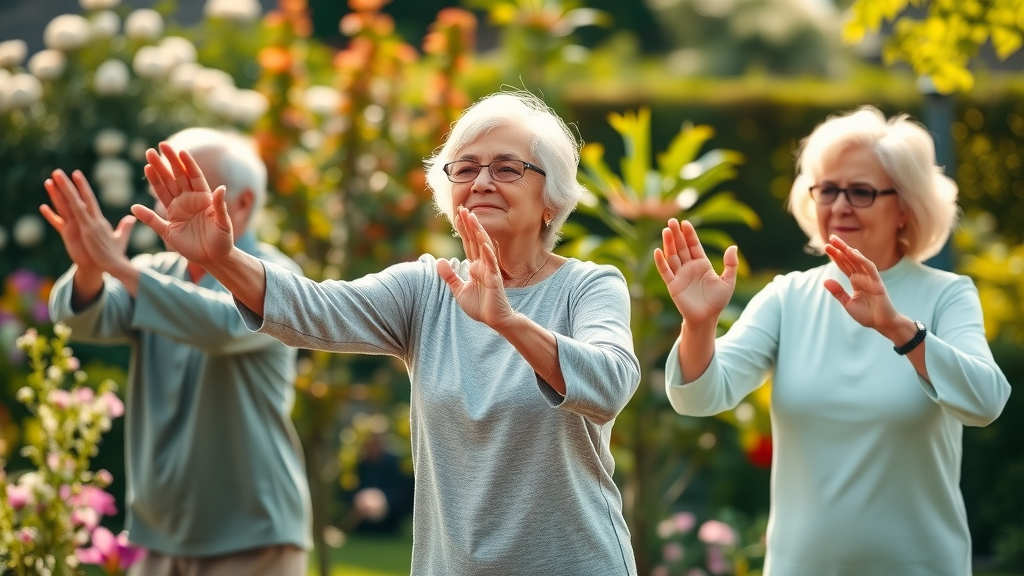
Aerobic Activity vs. Vigorous Activity: Definitions and Best Practices by Age Group
- Aerobic Activity Examples: Walking, cycling, swimming, dancing
- Vigorous Activity Examples: Running, basketball, vigorous swimming, interval training
Understanding the difference between aerobic activity and vigorous activity is key to following the most effective routine for your age group. Aerobic activity elevates your heart rate and breathing, yet can be comfortably sustained for longer periods—for example, brisk walking, cycling, or swimming. In contrast, vigorous activity pushes your limits, often making talking difficult while exercising—think of running, interval training, or fast-paced team sports.
Age group and health status determine the right balance of intensity. Children and young people can naturally mix bursts of high energy (jump rope, tag) with moderate activities, while adults should assess their current fitness before increasing intensity. For older adults or anyone returning after a break, start slowly and consult with a professional to avoid injury. Alternating moderate and vigorous intensity throughout your routine ensures broad health benefits and helps keep motivation high.
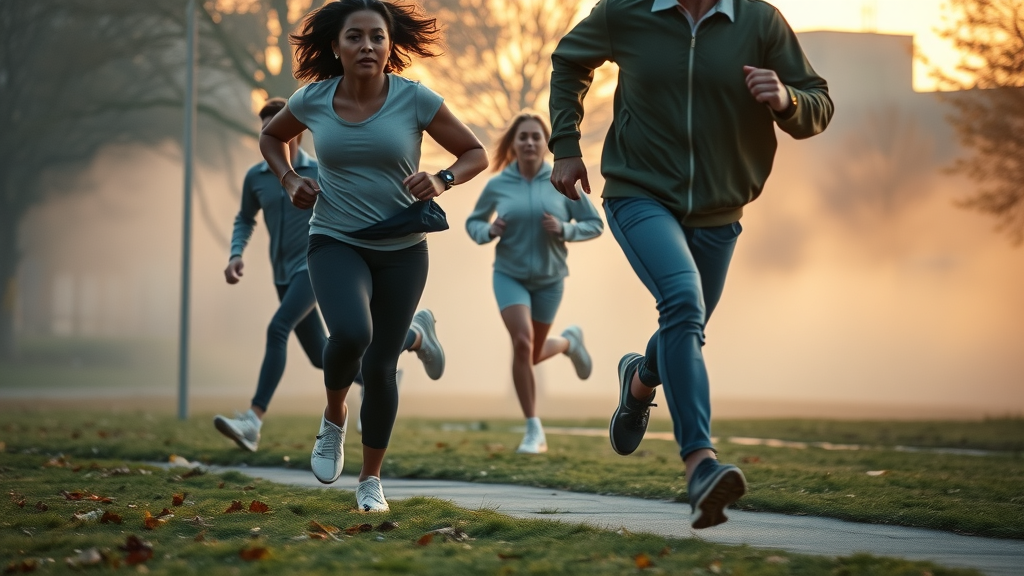
Physical Activity Statistics: Age Group Trends and Participation Rates
"Only 1 in 4 adults and 1 in 5 high school students in the U.S. meet recommended physical activity guidelines." – CDC
| Age Group | Meets Guidelines (%) |
|---|---|
| Children (6-17) | 23 |
| Adults (18-64) | 25 |
| Older Adults (65+) | 16 |
Despite strong evidence for the health benefits of regular physical activity , far too many people fall short of the recommendations. The above statistics show that a majority in every age group are missing out on the rewards of being physically active. Participation drops steadily with age; only 16% of older adults consistently meet recommended activity levels.
Understanding these trends can help families, communities, and policymakers develop targeted interventions and supportive environments. Increasing participation starts with education—spreading awareness of attainable activity guidelines and the powerful everyday benefits of movement for people of every age group.
Customizing Your Physical Activity Routine: Activity Guidelines for Every Age and Stage
- Preschool/Children: Prioritize joyful movement and unstructured play
- Teenagers: Encourage experimentation—team sports, dance, martial arts
- Adults: Schedule daily activity, track progress, mix intensity
- Older Adults: Focus on injury prevention, consult with healthcare professionals
There’s no one-size-fits-all approach to physical activity by age group ; what matters is customizing your routine to find exercise that’s safe, enjoyable, and meaningful for your current stage of life. For preschoolers and children, spontaneous and playful movement is best. Teens thrive on peer interaction and discovering new talents by trying sports and group activities. As adults, fitting movement into busy routines requires planning—use reminders, digital trackers, or community fitness groups to stay motivated.
For older adults , safety comes first. Focus exercise routines on balance, flexibility, and low-impact activities while adapting for chronic health conditions. Always consider consulting healthcare professionals before starting a new program, especially if you’ve been inactive or have existing health issues. With thoughtful customization, physical activity guidelines can become realistic goals for every age group.
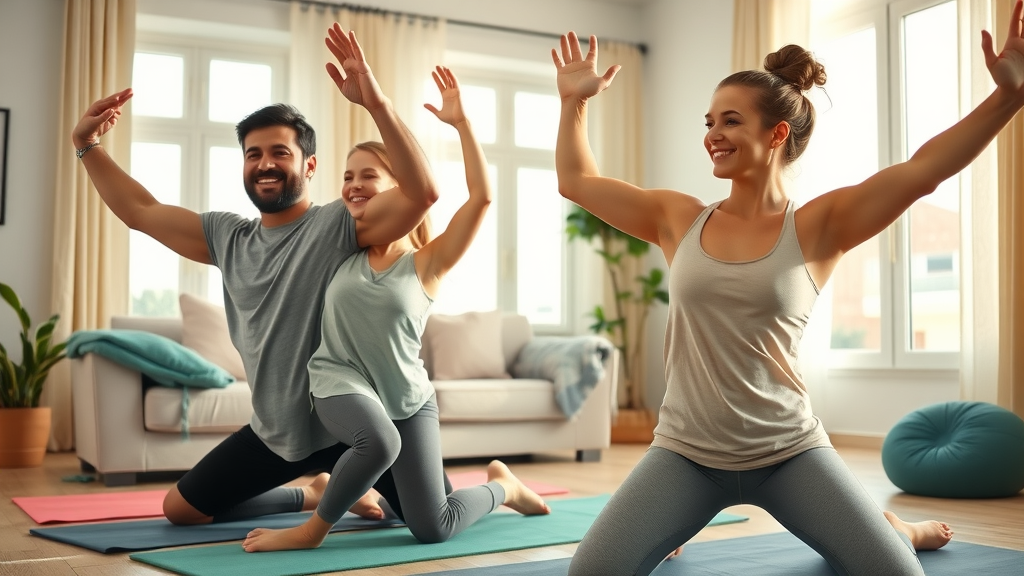
How much exercise should each age group do?
Detailed Recommendations on Physical Activity by Age Group
The recommended physical activity by age group varies, but the guidelines are straightforward: preschool children should be active throughout the day through play. Children and young people need at least 60 minutes of moderate to vigorous activity every day, weaving in at least three days of vigorous activity and muscle-strengthening activities per week. Adults should aim for 150 minutes of moderate intensity or 75 minutes of vigorous intensity activity each week, mixing in muscle-strengthening on two or more days. Older adults can maintain significant health and independence by following similar weekly targets, adjusted for reduced impact and a greater focus on stability and mobility.
Regardless of age group, it’s also important to break up long periods of inactivity—stand, stretch, or walk every hour. Progress slowly if you’re just starting out, and consider combining short activity bursts throughout the day to make up your daily or weekly goals. Adapting frequency, duration, and activity type is the safest and most effective way to build lifelong movement habits.
What are the physical activity guidelines for your age group?
Reviewing Activity Guidelines and Adapting for Special Circumstances
The official physical activity guidelines are a launchpad, but every individual's needs are unique, especially when considering health status, disability, or chronic illness. While most people can follow base guidelines, those with certain medical conditions should personalize their routines—for instance, by reducing intensity, increasing rest, or involving a physical therapist.
Pregnant women, people recovering from surgery, and those managing long-term conditions should consult healthcare providers before starting or adjusting an exercise plan. Even gentle movement—like stretching, chair-based activities, or shorter, more frequent walks—offers meaningful health benefits and supports physical and emotional well-being.
What are the statistics for physical activity?
Recent Data on Age Group Physical Activity Gaps
The latest data reaffirms persistent gaps between recommended activity guidelines and actual population-level behavior. Although awareness is growing, globally less than 25% of adults and fewer than 20% of children and young people reach optimal activity levels. The gap widens further with age, as barriers such as limited mobility, time constraints, and lack of resources undermine progress.
Tackling the “activity gap” demands combining education, access to facilities, supportive local policies, and social initiatives that make it easier (and more fun) for every age group to get moving. Whether it’s walkable neighborhoods, affordable sports programs, or free online fitness classes, creative solutions can help narrow these gaps for every generation.
How much physical activity should someone your age get each day?
Easy Ways to Meet Daily Activity Guidelines by Age Group
Achieving daily recommendations doesn’t require perfection—just consistency and creativity! For children and young people , start with imaginative games, skipping, and after-school activities. Teens and adults can split 150 minutes weekly into five 30-minute bursts or three sweaty 50-minute sessions. Brisk walks in the park, bike rides, yoga classes, or even active chores all count toward your weekly quota.
Older adults can integrate gentle balance workouts, aqua aerobics, or gardening for stability and strength. Remember, every step counts—engaging in brief activities throughout the day (“exercise snacks”) is as effective as one long session. Tracking progress with a journal or app makes routines sustainable year-round, empowering every age group to take charge of their wellbeing.
Expert Recommendations: Overcoming Barriers to Physical Activity by Age Group
"Every age group benefits from regular movement. Small changes, like 5 extra minutes of walking each day, strengthen your lifelong wellness foundation." – Dr. Jennifer Lee, Sports Medicine Specialist
Common barriers to exercise—time, motivation, pain, or simply not knowing where to start—affect all age groups differently. Children and young people thrive with enthusiastic role models and structured opportunities: family walks, after-school sports, and playful challenges spark engagement. Adults should prioritize routines they enjoy, recruit accountability partners, and start slow to prevent injury or burnout.
Older adults often need adaptive strategies: low-impact options like chair yoga, supported walking groups, and gradual increase in duration allow for safe, rewarding movement. Across every age group, focusing on “something is better than nothing” fosters momentum—celebrate small steps, adapt as needed, and remember that being active is a lifelong journey, not a race.
Frequently Asked Questions on Physical Activity by Age Group
- What counts as moderate vs. vigorous activity? Moderate intensity activity makes you breathe harder (like brisk walking or gentle cycling) but still able to speak. Vigorous activity (running, fast cycling, HIIT) leaves you out of breath and able to say only a few words before pausing for air.
- How do I adjust activity guidelines for chronic conditions? Always speak with a healthcare provider before changing your routine. Consider lower-intensity, shorter-duration sessions, and use aids like resistance bands or swimming to reduce joint stress. Listen to your body and progress slowly.
- What are the best routines for inactive adults? Start with light activities such as walking, stretching, or home workouts. Gradually add intensity and variety—joining community fitness groups or following video routines can make the transition easier and more enjoyable.
- Is it possible to start physical activity later in life and see benefits? Absolutely! Starting movement—no matter your age—improves heart function, mobility, balance, and mood. Even modest increases deliver significant health benefits for older adults and newcomers alike.
- How can parents support physical activity for children and young people? Serve as active role models, encourage a range of activities, provide safe environments, and praise effort over performance. Scheduling family activities and supporting participation in school or community sports foster lifelong healthy habits.
Take Your Next Step: Tools, Resources, and Real-Life Inspiration for Every Age Group
- Downloadable activity guidelines and weekly planners
- Video success stories illustrating multi-generational participation
- Community organizations for group exercise
- Digital wellness tools and apps for all ages
Whether you're starting a new routine, supporting a loved one, or looking to raise awareness, the right resources can make all the difference. Printable guides and planners help with organization, while apps and trackers boost accountability and enjoyment. Seek local classes or digital communities for advice, motivation, and real-life examples proving that an active life is achievable at any age.
Climb Aboard the Wellness Train! Empower Your Health Journey with Age-Appropriate Physical Activity
Ready to take control of your health—one smart step at a time? Explore more tips, tools, and real-life strategies to help you live better with chronic conditions. 👉 Join the Wellness Seekers today for exclusive guides, expert insights, and everyday solutions! Hop On the Train Now!
 Add Row
Add Row  Add
Add 


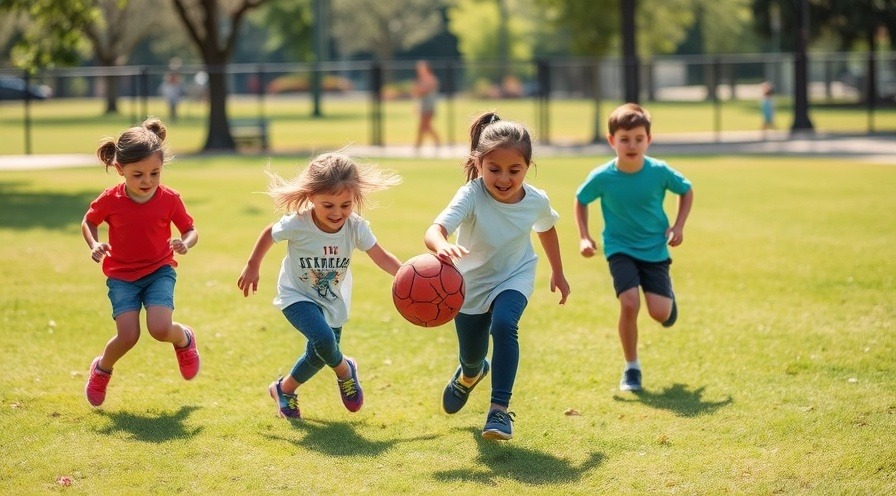

Write A Comment